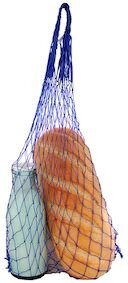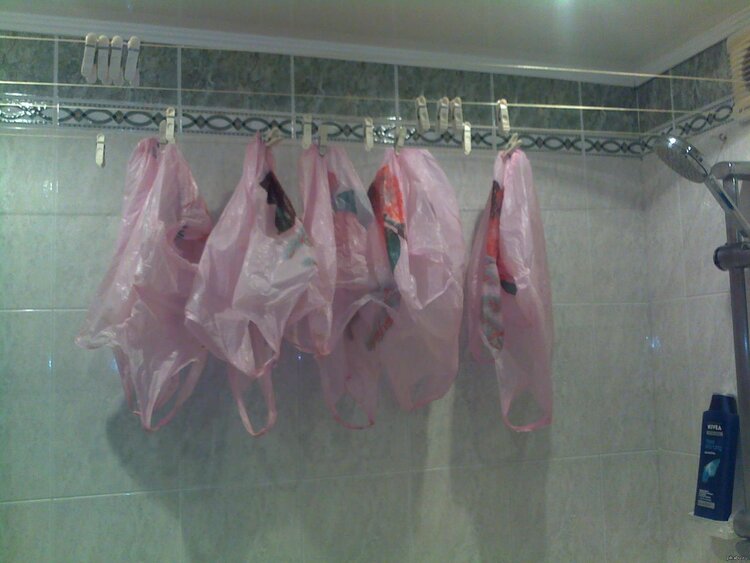The linear take-use-dispose consumerist way of life as a driver of development is not working long term; to find solutions we do not always need to invent something new - Innovation can come from applying known ideas in a new context. A Russian proverb says “Everything that is new is just well-forgotten old”.
I was born in the Soviet Union, and looking back at my childhood, there have been a few things that we could definitely apply today or are, in fact, already exploring as “innovative business models”.
So what can we learn from an economy that wasn’t based on consumerism? Here are a few examples from the Soviet/ Russian past that may offer some ideas.
The Universal Glass Bottle

It can carry milk, kefir, sour cream, drinking yoghurt and any dairy liquid. The colour of the aluminium cap and embossing tells you what is inside. Once you opened the bottle, you can put the lid back on by squeezing it tightly if needed.
Without labelling, there is no need to utilise additional material e.g. paper or glue; which then eliminates the risk of contamination and unrecyclable waste - the bottles could just be collected, washed and reused.
As all the bottles were the same shape and size, they could just be collected and reused, saving resources and energy required for recycling. Glass, tin and aluminium are widely recyclable and can just be processed in a closed loop. The collection points were made easily accessible anywhere where you buy the bottled drinks in the first place.
Similarly, juices came in a larger sized jumbo jar with a tin lid; alcoholic drinks were sold in bottles of a set number of shapes and sizes so they could always be reused for the same product.
Reusable shopping bags and containers

The Portable Egg Container
You take it with you to the shop, carry the eggs back home and use it to store the eggs in the fridge.
Pick your colour and shape.
Rinse and repeat!

The Can
You can use it to carry milk, kvass and any other liquid or drink you have bought in the shop. It also served as a convenient vessel for carrying eggs and any other fragile items. When you go foraging in the summer, this makes an excellent container for mushrooms and blueberries.

Meet Avos’ka!
A reusable bag that lasted generations, could be washed, was flexible enough to carry any shape, weight and type of purchases.
The name translates to “just in case” - just in case there is going to be something in the shops when you get there. Abundance of goods for sale was not a phenomenon known in the Soviet times which also meant that you didn’t buy compulsively and more than what you needed.
(Not advocating food shortages here, but there is a lot to be said about limiting the unnecessary choices in the fight with food waste.)
The Forever In-Season pickles and jams


Every household had that magic cupboard stocked up with jars filled with colourful vegetables, fruit and berries prepared over the summer to last through the winter. This was how seasonal produce could be made available throughout the year whilst retaining the nutritional value.
And guess what - another use for those juice jumbo jars!
The Ultimate Zero Waste drinks

The Juice Cones
These Juice cones were used for selling juice on the go - available in every supermarket and cafe, so you could grab a glass, get a drink and be on your merry way.

The Drinks Barrel
And this is why The Can was so useful - many popular drinks were sold out of a barrel like this one here, including beer and “kvass”. You could buy as much or as little as you needed (or could carry) and would use whatever container you had to take it home or drink on-site.

Soda vending machine
Soda vending machine like this one would be available in most public places. You put a coin in, take a glass, get a drink and wash the glass after use - all in one machine.
From the modern perspective, there may be some hygiene concerns about how the glasses are washed and reused in this set up. Surprisingly, this never came to mind in those days!

The “Mushroom” drink
This drink could be found in most households. It has recently been popularised in the UK and now known as “kombucha”. In Russia and Soviet countries it was known as a “mushroom” due to the shape and appearance of the live scooby that makes the drink. The ultimate regenerative and community drink - pieces of the live culture were shared between friend and neighbours, and it will grow and keep producing the drink as long as it is “fed” with sugar.
Nothing is single use
Caring for the items already in possession and trying to extend their useful life was a way of life - not because of the environmental street cred, but because the disposable incomes were limited. They say that necessity is the mother of all inventions - and also of responsible consumption.
Some of the images here may be very familiar to those who lived in those times, and may seem very odd to others.

The notion of single use plastic bag was foreign - bags were carefully washed and dried after every use and lasted for a long while.

These long cuffs prevent the sleeves from getting stained by the ink and therefore were often seen worn by accountants, students, engineers and anyone else who spent a significant amount of time writing

“Consignment” shops are a pre-internet version of Ebay, where you can take anything from clothes to furniture. You can sell the possessions you no longer need, and receive the money when they items are sold - which was also an additional incentive to take good care of the items to make sure the residual value held up.
Zero Waste Bathroom

Loofah
Made out of dried gourd, this washing puff came in different sizes and styles. Like any natural plant-based materials, loofah need to be replaced often and taken care of to ensure hygiene.

Dental powder
Toothpowder was made out of only a few natural ingredients, including chalk and soda. Sold in tin containers, the powder was versatile and effective in fighting plaque. The powder had been used for centuries in various cultures, up until toothpaste as we know it has been introduced.

Toothpaste
First toothpaste was introduced in 1950’s and was sold in aluminium tubes. Toothpaste had a range of applications other than cleaning teeth: it is very effective in cleaning silver, chrome and crystal, preventing glass from fogging, sorting out acne problems and 99 other uses.

All purpose soap
The yellow colour and a distinctive smell of this soap is almost symbolic. The soap was effective for pretty much any household uses from washing the clothes, surfaces and vegetables from the market to treating skin conditions and infections, due to its anti-bacterial properties.
Slow Fashion Made to Last
Making things last was one of the habits that you learned from childhood - if something is broken, finding someone who knows how to fix it was a matter of 2 minutes. Mass market fashion did not exist in the form that we know it now, and there were many ways to express individuality through clothes. Limited resources and abundance of skill led people to making the most of what was available. Whatever was created, was made to last - sometimes longer than one would wish!

Made to order
Bespoke clothes were not for the elite - the fashion ateliers were a regular service where you could have anything made: from everyday clothes, to lingerie, to knitwear to overcoats. You dream it - they make it.
Having a say in the design and creation of the clothes meant that there was a lot more value attached to them and people would wear garments for longer, often passing them down through generations.

Cobblers
These master shoemakers and shoe-fixers could create any design and make any shoes look like new, as well as other leather goods.
Many of those originally from a former-Soviet country living in the UK still take their shoes back to their country of origin to get them fixed because the quality and longevity of their work is unbeatable.
(Whenever I go back to St Petersburg, a visit to our local cobbler to say ‘Hi’ is a must - their family business has seen 3 of their generations work with 2 of our family generations)

Sewing machine
Most women knew how to sew, or at least mend clothes. Turning an old shirt into a new dress, or adding lace and pockets to a less trendy dress meant an entire new fashionable unique wardrobe in an evening.
Upcycling was a way of life - sometimes to preserve resources, and sometimes - to preserve memories.
Recycling and Materials collection
Recycling and collection was not only commonplace but part of a weekly routine. The collection points for key materials were widely accessible - in some cases even mobile - and everyone new what went where.
It was often the school kids who used to collect the old newspapers, cardboard, glass etc and take them to the collection point - firstly, as a lesson in responsibility (just like another chore); secondly, a lesson of respect to natural resources and community; and thirdly, because they would get cash in exchange for the materials collected.


This poster above was part of the public awareness and information campaign encouraging customers to bring back all the glass bottles from alcoholic drinks they have purchased stating the cash price for returning each.
Similarly, other materials had their value too, incentivising people to return glass, metal, paper and other valuable resources back into circulation.
Innovation is born out of necessity and limitations - in financial means, in resources, time etc. We are now facing all of those limitations; a lot of concepts that we need to explore and scale have been around for a very long time. Some of these have come back but with new, fancier names and marketing campaigns attached to them.
What are the other examples of responsible consumption from your childhood that we could benefit from in the current time?
Has your organisation considered how circular economy principles can bring long term value to your business and community?
If you are not sure where to start, get in touch: marina@bemari.co.uk.
Circular economy is about designing out waste and continual use of resources. Reduction of materials we use and more responsible consumption are important strategies that we have to pursue in order to address the environmental challenges we are now facing.
Insights
You have come to the place for thought leadership.